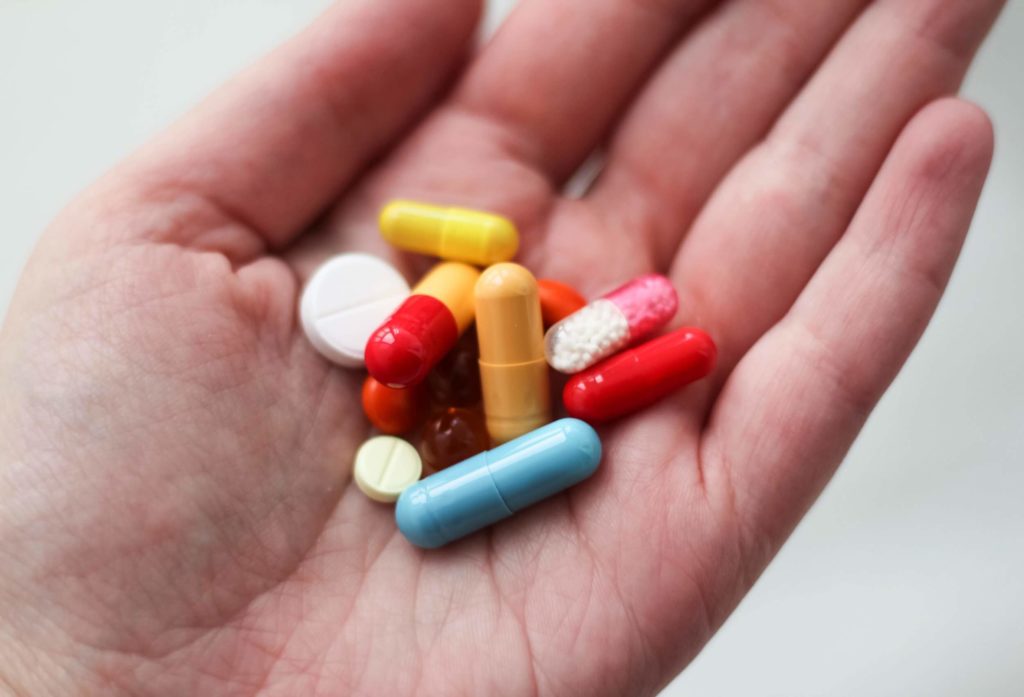Introduction
Light therapy, also called photobiomodulation, is a non-invasive form of therapy that uses wavelengths of light to treat a variety of conditions. Only a select range of wavelengths of red light and near-infrared light is seen as being potentially therapeutic. The window of wavelengths ranges from 600–1200 nanometres. (1)
Red light absorbs into the skin and can provide therapeutic benefits at the cellular level. Unlike other light-based treatments, red light therapy (RLT) doesn’t cause damage to the skin (2), and it doesn’t rely on heat, drugs, chemicals or excess UV rays. (1) RLT isn’t new. Photobiomodulation has been studied for decades and research continues to be done to test its effectiveness.
What Is Red Light Therapy?
RLT is a type of treatment that uses red or near-infrared light as a way to treat skin inflammation, pain and other conditions. Other names include low-level light therapy (LLLT), cold laser therapy and light-emitting diodes (LED) light therapy. (3) RLT uses either lasers, filtered lamps, LEDs or a combination of LEDs and lasers. (4) Infrared light can’t be perceived by the eye. Red light is similar, but the naked eye can see it. (5)
When red and infrared light waves are deployed, they are believed to increase mitochondrial function and affect the cells on a biochemical level (6, 7, 8, 9, 10). The light penetrates 8–10 millimetres deep, sometimes leading to an increase in the production of cellular energy. (11) The surrounding layers of skin, blood vessels and tissues are affected, and stem cells can be activated to allow improved tissue healing and repair.
What Are the Benefits of Red Light Therapy?
RLT stimulates the production of adenosine triphosphate (ATP) within the mitochondria. (12) This means it increases the ability to produce cellular energy by working from the inside out, and it may help cells to repair themselves.
This process can lead to benefits such as a decrease in skin inflammation, the repairing of the effects of sun damage, the reduction of stretch marks and wrinkles and the stimulation of hair growth. (11) Other benefits backed by clinical research include decreased joint pain and inflammation and the improved healing of wounds. There’s some evidence of improved cognitive functioning in people with a history of traumatic brain injury. (1)
*Skin
Many people are interested in the possibility of obtaining improved skin health from RLT. Skin is the organ most exposed to natural light. It responds well to red and near-infrared wavelengths used with therapeutic intent. (4)
Red LED lights act on skin cells known as fibroblasts. These cells aid in collagen production, which can help the skin to recover when it’s damaged. (13)
This form of therapy may also help to rejuvenate the skin by increasing circulation between blood and tissue. A variety of skin conditions may respond to LLLT, including burns, UV damage, pigmentary disorders and psoriasis. (4) Participants in some studies have reported visible improvement in fine lines and wrinkles. (1).
*Ageing
RLT penetrates through the skin and improves the body’s physical health at the cellular level. This may have a positive effect on life expectancy and overall good health. (14)
Scientists are continuing to research the impact red light may have on life expectancy and quality of life. For example, Professor Glen Jeffrey of University College London researched the effects of RLT on fruit flies. He was surprised to find that after the therapy, the metabolism of the flies improved and they lived longer. (15) This may indicate that RLT may have a recharging effect on weakened mitochondria.
*Testosterone
Testosterone is a sex hormone mainly released in the Leydig cells of the testes. Testosterone levels play an important role in the onset of puberty, growth of facial hair, sex drive and sperm production. (16) These hormones also have a significant influence on the body-fat composition and muscle mass. (17)
Healthy levels of testosterone in men can decrease the risks of metabolic health problems such as Type 2 Diabetes. (18) Research suggests that testosterone may increase skeletal muscle mass and lower abdominal obesity through the hindrance of lipoprotein lipase action. Some studies show a relationship between low testosterone levels and an increased risk of metabolic syndrome (19). These conditions may have long-term adverse effects on your health and longevity. Studies make a case for examining testosterone as an anti-ageing hormone correlated with longevity.
Red light and near-infrared light enhance ATP production in mitochondria and have been shown to boost sperm production in animal studies. (20) Studies indicate that testosterone levels can be boosted with a natural red light if a device with wavelengths from 600–950 nanometres is used. Devices such as lamps and bulbs that are sold for RLT may generate greater than 1000 nanometres of light, which can result in burns. (21)
*Acne
Acne vulgaris is a condition that involves the blockage of the sebaceous glands. It is known that the sun can alter the way these glands behave and can help to calm overactive glands. Since too much sun can lead to other problems such as damage from ultraviolet light, RLT is a potential alternative for reducing inflammation, irritation and sebum overproduction. (22)
*Wound Healing
Cells that are important for tissue regeneration such as mast cells, neutrophils, macrophages and fibroblasts can be stimulated using a high degree of penetration of red lights. (23) Both laser and LED light therapy appear to increase collagen synthesis and decrease inflammatory cells, which can promote the healing of skin wounds. (24)
*Hair Growth
Low-level laser therapy may encourage hair growth by irradiating photons into scalp tissues. Weak tissues can then absorb the photons. The results are inconclusive, and the treatment seems to work for some but not for others. (25)
Studies are ongoing on the effectiveness of RLT on hair loss. One study concluded that people with alopecia who had low-level RLT showed improved hair growth. More research needs to be done in this area. (22)
*Reducing Pain
Low levels of red light can penetrate layers of skin and reach nerves and muscles. This increases blood flow and cellular activity in and around the treated area, which may lead to relief in some conditions that involve joint and muscle pain and stiffness. (26)
Examples of painful conditions that may benefit from RLT include dental pain, osteoarthritis, rheumatoid arthritis, back pain and neck pain. (27)
*Inflammation
Inflammation is the body’s response to an irritant such as a pathogen or an injury. Metaflammation refers to constant, low levels of inflammation throughout the body. This is a sub-optimal health condition that is considered a factor in chronic metabolism disorders. Studies show that inflammation is correlated with metabolic health. (28) Signs of inflammation include pain, swelling, redness and heat. Preliminary research suggests that RLT has an anti-inflammatory effect on the body. (22)
The reduction of inflammation can benefit a variety of conditions including joint disorders and traumatic injuries. Anti-inflammatory effects have been demonstrated in animal studies on conditions such as traumatic brain injury, spinal cord injury, lung inflammation and arthritis. (29)
Side Effects
The non-invasive nature of RLT means there are very few side effects. It’s reported to be a completely natural process, and the amount of light the skin is exposed to isn’t harmful. The potential danger this kind of treatment poses would be the treatment given by an inexperienced person. Products manufactured for use at home may be flimsy and lead to burns or damage to unprotected eyes. (22)
The use of LED devices has reduced many concerns associated with lasers, such as the need for professionally trained people to operate them. Many LED devices are designed for home use. (4)
In most cases, there are no adverse side effects when LED devices are used as directed. It isn’t yet known whether there could be potential long-term effects. (30)
Conclusion
RLT may be beneficial for certain conditions such as skin problems, acne, wound healing, and pain. It has also been found to support healthy testosterone levels and counter inflammation, a predictor of metabolic syndrome. Healthy levels of testosterone in men can decrease risks of metabolic health problems. It can be administered by a dermatologist or a rheumatologist, and treatment may be available at day spas, tanning salons and wellness centres.
Abundant caution should be exercised with regard to devices purchased in stores, which may be more likely to result in misuse, burns and damage to the skin.
There is promising early evidence of the benefits of RLT. However, continued clinical trials are needed to help answer unresolved questions.
Disclaimer: The contents of this article are for general information and educational purposes only. It neither provides any medical advice nor intends to substitute professional medical opinion on the treatment, diagnosis, prevention or alleviation of any disease, disorder or disability. Always consult with your doctor or qualified healthcare professional about your health condition and/or concerns and before undertaking a new healthcare regimen including making any dietary or lifestyle changes.
References
- https://bengreenfieldfitness.com/article/biohacking-articles/red-light-therapy-benefits/
- https://www.healthline.com/health/red-light-therapy
- https://www.mindbodygreen.com/articles/red-light-therapy-benefits-and-side-effects-of-this-skin-therapy-technique
- https://www.ncbi.nlm.nih.gov/pmc/articles/PMC4126803/
- https://www.webmd.com/skin-problems-and-treatments/red-light-therapy








